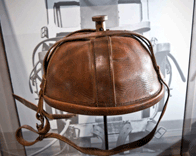Short History Massachusetts Death by Electric Chair
Recently and over the past several years there have been too many stories reported of botched death penalty executions. In 1898, Massachusetts was the third state to employ the electric chair to carry of court ordered death sentences. Actually, Massachusetts was one of the first states to carry out the death penalty in colonial times but has since changed its approach. In early times, hanging was the primary method of execution.
Some defendants in the 1600's were executed for religious affiliations. Mary Dyer was just one of the people executed for affiliating with the Quaker religion and there were dozens of individuals, both male and female, executed for witchcraft. In 1900, Massachusetts installed an electric chair to be used in death penalty cases.
 |
| Control Room |
When a criminal is to be electrocuted, their head and legs are shaved. Their eyebrows and facial hair may also be trimmed off to reduce the odds of the prisoner catching fire. Once the prisoner is fastened into the chair, a sponge dipped in saline solution is laid on top of their head to encourage conductivity.
A single electrode is affixed to their head, and another is connected to one of their legs to complete the closed circuit. The prisoner receives two jolts of current: the length and intensity is dependent on the person’s physical condition. Generally, the first surge of approximately 2,000 volts lasts for as many as 15 seconds. This usually causes unconsciousness and halts the victim’s pulse.
 |
| Helmit |
Next, the voltage is turned down. At this point, the prisoner’s body reaches up to 138°F, and the uninterrupted electric current causes irrevocable damage to his or her internal organs. The electric current burns the prisoner’s skin, forcing prison employees to peel the dead skin from the electrodes.
After close to 50 years of use, the state finally put the electric chair to rest along with the death penalty. The State of Massachusetts’ final use of capital punishment was documented in 1947.
 |
| Viewing Room |
















0 Comments:
Post a Comment
<< Home